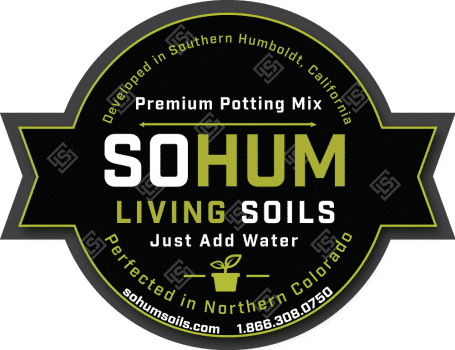Video Transcript:
I’m Ellis Smith reporting from the SoHum warehouse here in Denver, Colorado. I want to talk to you today about, “What is Living Soil?”.
Living Soil is a little bit different than your traditional way of growing with salt-based nutrients whether you are using a liquid base or a dry salt base amendment.
Traditionally, these chelated nutrients are just allowing all of the micro and macronutrients to be readily available to the plant and having it uptake immediately.
What happens with Living Soil is, we do it a little bit different where we can use the same growing mediums minus rock to use it as our base. We can’t use coconut coir, but we can use peat. But the foundation of it is really using worm castings from a compost.
You can use other compost mixes. We do a Sohum compost. We use Burma compost, and we use a combination of macro and micronutrients that are coming from all different kinds of plant and animal byproducts, whether it’s kelp meal, bone meal, these types of things. We are using Azomite, these different kinds of minerals.
And what we’re doing is, they’re not chelated, meaning, they’re not readily available to the plant uptake. So, what we’ve done is, through that Burma compost, as well as some other proprietary beneficial bacterian fungus-like, microbrizin that you guys are aware of, bacillus bc’s, these things.
We have put this into the soil along with a lot of the nematodes and other great things in the worm castings to really come and chelate food and soil for the plant.
Meaning, these microbes, these bacteria as well as the fungus, they’re going to eat all this food we put in there from the plant-based and animal byproducts. They’re going to eat all that material up, and when they poop it out, it’s called an “exudate”.
That’s going to make this now chelated, all that food and macro and micronutrients that they’ve chewed up, making that readily available to the plant to uptake.
In a nutshell, that’s what Living Soil is. We are allowing what Mother Nature has been doing outside for thousands and thousands and millions of years, millennials, and replicating that into the soil.
So, it’s no different than what we’re doing with the liquid-based fertilizer making that readily available, we’re just using a different approach to get that chelation process to happen by using microbes to chew that stuff up, poop it out, and make it readily available to eat.
That’s Living Soil. Stay tuned. We have more content coming to you.





